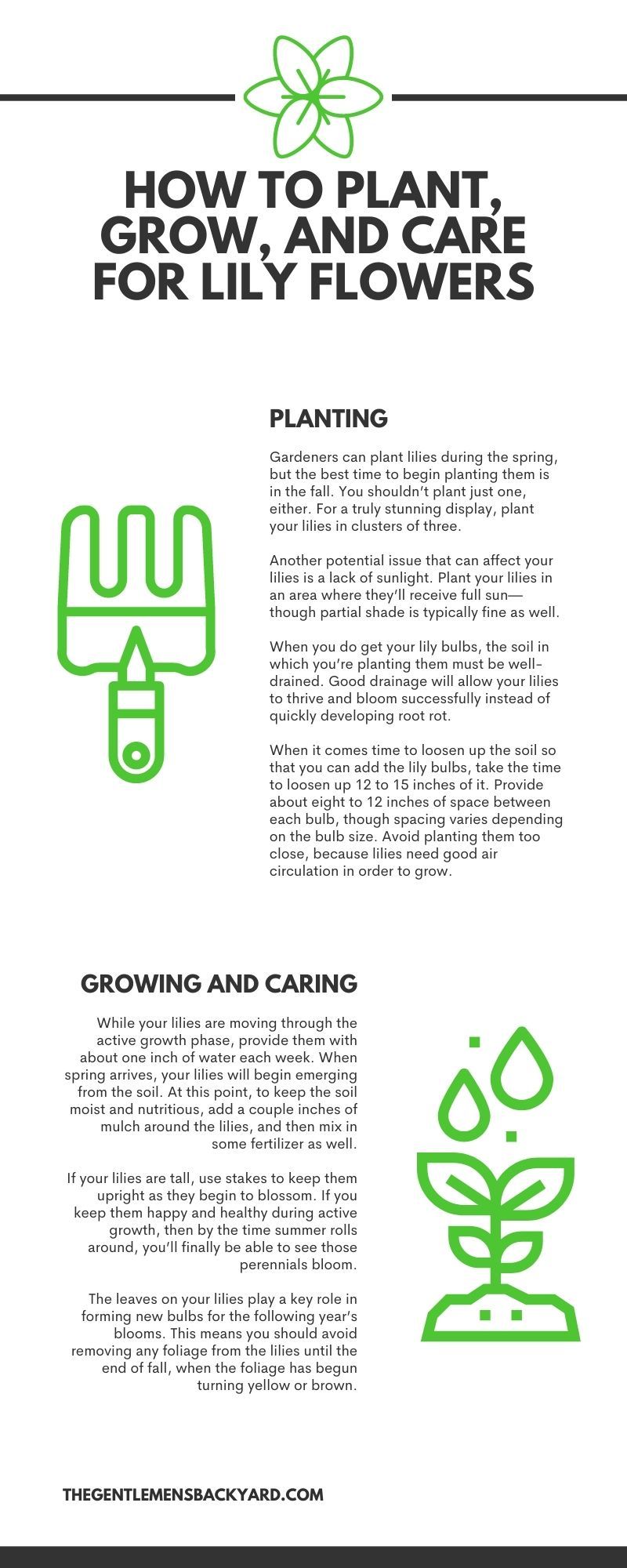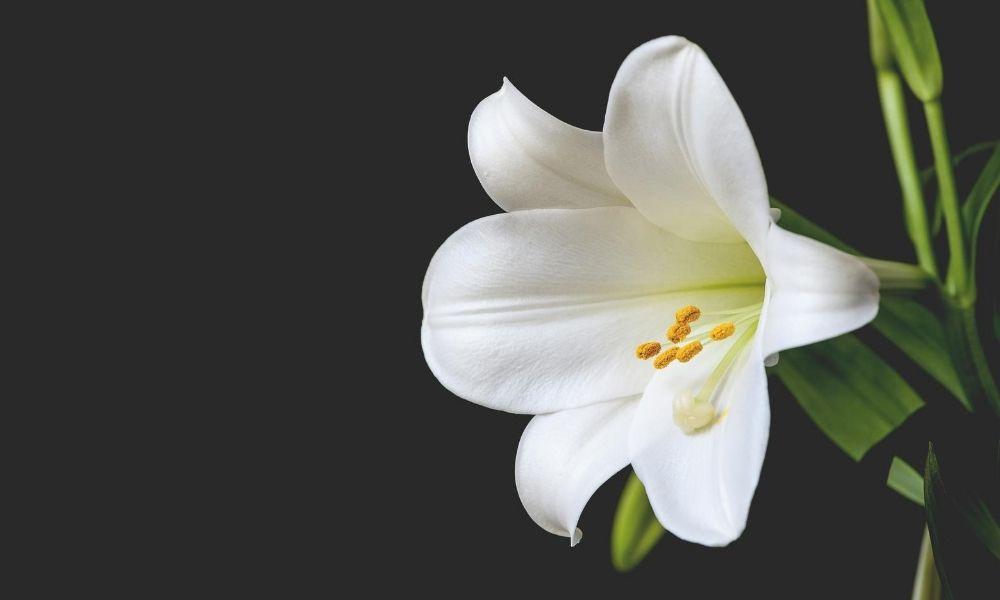Lilies are perennials that bloom beautifully in a variety of vibrant colors. In order to get that result, you need to take proper care of these plants as they grow in your yard. To help you get the right results from your lilies, we’ve put together this guide on how to plant, grow, and care for lily flowers at home.
PLANTING
Gardeners can plant lilies during the spring, but the best time to begin planting them is in the fall. You shouldn’t plant just one, either. For a truly stunning display, plant your lilies in clusters of three. However many you plant, it’s essential that you know for sure when you’re going to plant your lily bulbs after buying them. The longer you hang onto the bulbs after the initial purchase, the more moisture they’ll lose. If you’re planting lilies in the spring, don’t buy the bulbs in the fall to prepare ahead of time.
Another potential issue that can affect your lilies is a lack of sunlight. Plant your lilies in an area where they’ll receive full sun—though partial shade is typically fine as well. As long as the plants get at least six hours of sun per day, you should be in the clear.
When you do get your lily bulbs, the soil in which you’re planting them must be well-drained. Good drainage will allow your lilies to thrive and bloom successfully instead of quickly developing root rot. When you’re planting the lily bulbs, mix in some organic matter to enhance your soil drainage. Take note of the pH levels in your yard’s soil as well. Lilies thrive in acidic soil, but be wary of how high your pH levels are. You should aim for soil that ranges from 5.5 to 6.5 in terms of pH with these perennials.
When it comes time to loosen up the soil so that you can add the lily bulbs, take the time to loosen up 12 to 15 inches of it. This depth will provide the bulbs with protection from extreme temperatures while allowing their roots to successfully develop. Next, dig four- to nine-inch-deep holes for each bulb you’re planting. To choose the right depth, take your climate conditions into consideration. If you live in an area with a warm climate, you should plant the lily bulbs nine inches deep to keep them cool and healthy. Although lilies like heat up top, the roots down below need shade and cool temperatures to thrive.
Provide about eight to 12 inches of space between each bulb, though spacing varies depending on the bulb size. Avoid planting them too close, because lilies need good air circulation in order to grow. When you place the bulbs in the soil, the roots should be facing downward and the tip should be facing upward. Once your bulbs are in their new homes, you can cover them up with soil, pat the soil gently, and then provide them with their first servings of water.
GROWING AND CARING
Don’t be shy about watering your lilies; you want to provide your plants with a healthy helping of H2O. While your lilies are moving through the active growth phase, provide them with about one inch of water each week. When spring arrives, your lilies will begin emerging from the soil. At this point, to keep the soil moist and nutritious, add a couple inches of mulch around the lilies, and then mix in some fertilizer as well. That way, you can maintain a healthy environment in which your lilies can thrive.
As your lilies grow in the spring, another factor to keep an eye out for is their height. If your lilies are tall, use stakes to keep them upright as they begin to blossom. If you keep them happy and healthy during active growth, then by the time summer rolls around, you’ll finally be able to see those perennials bloom.
The leaves on your lilies play a key role in forming new bulbs for the following year’s blooms. This means you should avoid removing any foliage from the lilies until the end of fall, when the foliage has begun turning yellow or brown. However, removing the stems and flowers is a different story. You can carefully remove these after the lilies have bloomed for any number of reasons. You can cut down stems and use the lilies as part of a bouquet. On the other hand, removing fading or wilting flowers can prevent the plant from unnecessarily using energy to form seed pods for that particular flower.
If you’re cutting the flowers, leave at least two-thirds of the stem behind. Although the plant can lose part of the stem, it does need the rest of it for the same reason it needs the leaves: to facilitate the growth of more bulbs for the following season.
Once your lilies bloom in the summer, the flowers usually stick around for a few weeks. You can either leave them be so that they provide a form of natural beauty in your yard, or you can cut them to put in vases or bouquets. If you do decide to put lilies in a vase, remove the leaves on the lower end of the stem beforehand so that they don’t sit underwater.
The best time to cut lilies is during the earliest stages of the bud’s opening, either right before it opens or right after. To avoid stains from the orange pollen in the lilies, carefully remove the stamen that rests inside the flower.
Now that you know the ins and outs of how to plant, grow, and care for lily flowers, you’re ready to seek out bulbs of your own. At the Gentlemen’s Backyard, we have a wide variety of lily bulbs for sale, some of which form flowers that sport dark purple and bright white color combinations. Others will feature a more uniformly pink or peach design. Whichever lilies you choose, as long as they receive the right care, they’ll provide your garden with stunning, vibrant flowers when summer arrives each year.



